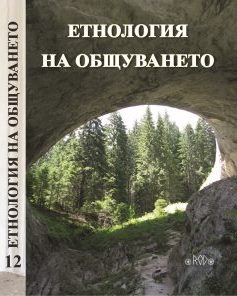Прилог кон доцноантичките утврдувања во Североисточна Македонија
Contribution to the late antique fortifications in northeastern Macedonia
Author(s): Zvonimir NikolovskiSubject(s): Anthropology
Published by: Асоциация за антропология, етнология и фолклористика ОНГЬЛ
Summary/Abstract: The main objective of the discourse is through a paradigmatical approach to elaborate the typology of the funus and the typology of the funeral forms in the Roman necropolis from І–IV century in the Northeastern region of the Republic of Macedonia. According to the results from the past archaeological explorations, the elaboration encloses three of the more explored funeral wholes in the area of Kumanovo and several examples that were partially explored and were a part of the areas of Kratovo and Kriva Palanka. The most complete review of the typology of tomb constructions is evident on the necropolis of the locality called “Drezga” in the area of the village of Lopate, near Kumanovo, through the Early Christian forms of inhumation with incineration till the Late Antique forms with inhumated decedents, after the promulgation of Constitutio Antoniniana on Karakala in the year 211. We can find direct analogies of the typology of tomb constructions and the form of inhumation with the necropolis on the locality called “Skupi”, which is directly connected with a road communication, that can with small aberrations be found in the so called “Old road”/”Star pat” to Skopje. A rich active material is presented in the elaboration for the necropolis, which was applied as a supplement with the sepulchral ritual. The explored part of the necropolis of the locality called “Kostoperska Karpa” in the area of the village of Mlado Nagorichane is presented as a second funeral whole, which supplements the image about the types of tomb constructions in the Late Antique period and through a part of the findings, the ethnical belonging of the decedent. In its nearness, eastern of the region called “Crkvishte” and “Ramnishte” in the area of the village of Klechovce, with several archaeological campaigns, an existence of a settlement and a necropolis was confirmed, which according to all of the elements chronologically refers to V and VI century. Typologically, those are, in more of the examples, simple tomb constructions. In the area of Kratovo, according to the partially explored necropolis of the locality called “K’shla” and the necropolis in the village of Talashmance, we find the same or similar typology of tomb constructions, with relapses of tumular inhumation from the eastern areas. In the area of Kriva Palanka, with protected explorations of the locality called “Chiflik”-Babunci 500 tombs were discovered, dating from VII B.C. till VI B.C.
Journal: Годишник на Асоциация за антропология, етнология и фолклористика »Онгъл«
- Issue Year: 2013
- Issue No: 12
- Page Range: 273-295
- Page Count: 23
- Language: Macedonian
- Content File-PDF

